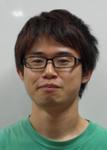Org. Synth. 2010, 87, 53
DOI: 10.15227/orgsyn.087.0053
STEREOSELECTIVE SYNTHESIS OF 3-ARYLACRYLATES BY COPPER-CATALYZED SYN HYDROARYLATION
[(E)-Methyl 3-phenyloct-2-enoate]
Submitted by Naohiro Kirai and Yoshihiko Yamamoto
1.
Checked by Peter Wipf and Courtney L. Vowell
2.
1. Procedure
(E)-Methyl 3-phenyloct-2-enoate (1). A 200-mL two-necked round-bottomed flask equipped with a magnetic stirring bar (2.5 cm × 0.8 cm) is charged with methyl 2-octynoate (5.00 mL, 4.60 g, 29.5 mmol) (Note 1), MeOH (60 mL) (Note 2) and phenylboronic acid (5.52 g, 44.3 mmol, 1.5 equiv) (Notes 3 and 4). One neck of the flask is equipped with rubber septum and nitrogen inlet, the other with a glass stopper, and the reaction mixture is degassed once at −78 °C (Note 5). The glass stopper is removed and CuOAc (84.0 mg, 0.606 mmol) (Note 6) is added. The reaction mixture is degassed three times at −78 °C (Note 5). After vigorous stirring for 24 h at 28 °C under an N2 atmosphere (Note 7), the reaction mixture is filtered through a pad of Celite® (Note 8) and washed with a mixture of hexanes/EtOAc (150:1; 3x10 mL) to remove insoluble materials. The filtrate is concentrated by rotary evaporation (5.5 mmHg) at 30 °C to afford a crude oil. The crude product is purified by chromatography on SiO2 (Note 9) to yield 1 (6.48 g, 94%) as a colorless oil (Notes 10 and 11).
2. Notes
1.
Methyl 2-octynoate (99%) was purchased from Sigma-Aldrich (Checkers) or TCI (Submitters) and used as received.
2.
Methanol was purchased from J.T. Baker (Checkers) or Wako (Submitters) and used as received.
3.
Phenylboronic acid (98%) was purchased from Lancaster (Checkers) or Sigma-Aldrich (Submitters) and used as received.
4.
A slight excess of phenylboronic acid was used to ensure the complete consumption of the alkynoate.
5.
The flask is placed in a −78 °C bath (dry ice/acetone), evacuated (1.45 mmHg, 30 sec), and backfilled with nitrogen gas.
6.
CuOAc (90%) was purchased from Acros (Checkers) or Sigma-Aldrich (Submitters) and used as received.
7.
The initial green reaction mixture turned yellow in several hours. Reaction progress was monitored by TLC analysis on EM Science precoated silica gel 60 F254 plates, visualized by a 254-nm UV lamp and stained with a KMnO
4 solution (5 wt.% in 1 M NaOH). TLC analysis showed the formation of acrylate
1 (yellow) (hexanes/ethyl acetate, 10:1, R
f = 0.59), while the R
f of methyl 2-octynoate (yellow) was 0.49.
8.
Fisher Celite
® 545 fine.
9.
Column chromatography was carried out on a 4-cm diameter column packed with 93 g SiliaFlash P60 silica gel (230-400 mesh) using hexanes/ethyl acetate (24:1) as the eluent. Approximately 1 L of the solvent mixture was used. Fractions 20-48 (fraction size of 5 mL) were collected.
10.
Spectroscopic and analytical data of
1 are as follows:
1H NMR
pdf (300 MHz, CDCl
3) δ: 0.88 (t,
J = 7.2 Hz, 3 H), 1.30–1.47 (m, 6 H), 3.14 (t,
J = 7.2 Hz, 2 H), 3.76 (s, 3 H), 6.06 (s, 1 H), 7.36–7.46 (m, 5 H);
13C NMR
pdf (75 MHz, CDCl
3) δ: 14.0, 22.5, 28.8, 31.0, 31.9, 51.0, 116.7, 126.7, 128.5, 128.9, 141.4, 161.4, 166.8; IR (oil) 2955, 2931, 2360, 2341, 1713, 1624, 1191, 1170 cm
-1; MS (EI)
m/
z (rel. intensity, %): 232 (76, M
+), 201 (66), 189 (75), 176 (100); HRMS (EI+)
m/z Calcd for C
15H
20O
2: 232.146330, found: 232.146275
11.
GC-analysis was carried out using an Agilent Technologies 6890 N Network GC System equipped with a capillary column (Agilent Technologies, HP-5) (30.0 m × 0.32 mm × 0.25 mm). Oven program for GC-analysis: starting temperature, 50 °C for 1 min; heating to 280 °C at a rate of 30 °C/min. Retention time of acrylate
1: R
t = 8.65 min. GC-analysis indicated that
1 has >99% purity.
Handling and Disposal of Hazardous Chemicals
The procedures in this article are intended for use only by persons with prior training in experimental organic chemistry. All hazardous materials should be handled using the standard procedures for work with chemicals described in references such as "Prudent Practices in the Laboratory" (The National Academies Press, Washington, D.C., 2011 www.nap.edu). All chemical waste should be disposed of in accordance with local regulations. For general guidelines for the management of chemical waste, see Chapter 8 of Prudent Practices.
These procedures must be conducted at one's own risk. Organic Syntheses, Inc., its Editors, and its Board of Directors do not warrant or guarantee the safety of individuals using these procedures and hereby disclaim any liability for any injuries or damages claimed to have resulted from or related in any way to the procedures herein.
3. Discussion
The conjugate additions of aryl metal reagents to alkynoates produce synthetically useful 3-arylacrylates.
3 For this purpose, organocopper reagents have been typically employed,
4 although their use has several limitations: (a) (semi)stoichiometric amounts of copper source are required, (b) the stereochemistry of the products depends on both the reaction conditions and nature of the organocopper reagents, and (c) they are incompatible with highly reactive functional groups. To address these issues, the transition-metal-catalyzed selective hydroarylations of alkynoates have recently been developed using arylboronic acids as bench-top stable, easy to handle arylating reagents.
5 These methods, however, require expensive precious metal catalysts together with phosphine ligands and/or relatively harsh reaction conditions. The present procedure presents a new hydroarylation method of alkynoates with arylboronic acids using inexpensive copper acetate as a catalyst. The reaction on a 30 mmol scale efficiently proceeds at 28 °C in methanol to afford 3-arylacrylates in good yields with excellent
syn-selectivity. This method is also applicable to ethyl 3-phenylpropiolate as the substrate to stereoselectively deliver 3,3-diarylacrylates in good yields (Table 1).
Table 1. Hydroarylation of ethyl 3-phenylpropiolate.a
Table 2. Scope of Cu-catalyzed hydroarylation of alkynoates.a
The generality of this method has been demonstrated on a smaller scale as shown in Table 2, although 3 equiv of arylboronic acids were employed in our previous study to ensure the complete consumption of the alkynoate substrates.
6 The newly optimized 30 mmol scale reaction can be carried out with 1.5 equiv of arylboronic acid. The Cu-catalyzed hydroarylation reaction is applicable to formyl- or iodo-substituted arylboronic acids and methoxy- or chloro-substituted alkynoates. When methoxy-substituted phenylpropiolates were used, 3,3-bis(methoxy- phenyl)acrylates were obtained stereoselectively. The synthesis of 4-arylcoumarins has been accomplished by utilizing this stereoselective hydroarylation reaction.
7
Appendix
Chemical Abstracts Nomenclature (Collective Index Number);
(Registry Number)
2-Octynoic acid, methyl ester; (111-12-6)
Boronic acid, phenyl-; (98-80-6)
Acetic acid, copper(1+) salt; (598-54-9)
2-Octenoic acid, 3-phenyl-, methyl ester, (2E)-; (189890-29-7)
 |
Yoshihiko Yamamoto was born in Nagoya in 1968. He obtained his Ph.D. (1996) from Nagoya University, where he was appointed as an Assistant Professor in 1996 and promoted to an Associate Professor in 2003. In 2006, he tentatively moved to Tokyo Institute of Technology, and returned to Nagoya University in 2009. His research interests are focused on the development of organometallic reagents and catalysis.
|
 |
Naohiro Kirai was born in Kagawa, Japan in 1984. He received his M.E. in 2009 from the Tokyo Institute of Technology under the supervision of Professor Yoshihiko Yamamoto. In the same year, he started his doctoral studies at the Department of Chemistry, Tokyo Institute of Technology, under the guidance of Professor Nobuharu Iwasawa. His current interest is catalytic CO2-fixation reaction.
|
 |
Courtney L. Vowell obtained a B.S. degree in Chemistry in 2007 from Millsaps College in Jackson, Mississippi, where she conducted chiral separations using the macrocyclic antibiotic vancomycin as a stationary phase under the supervision of Prof. Timothy J. Ward. She obtained her M.S. in Chemistry in 2009 from the University of Wyoming with Prof. Dean M. Roddick. Her research focused on the synthesis and oxidation properties of homoleptic perfluoroalkylphosphine platinum(0) complexes. In the summer of 2009, she joined the University of Pittsburgh Center for Chemical Methodologies and Library Development (UPCMLD) as a staff member.
|
Copyright © 1921-, Organic Syntheses, Inc. All Rights Reserved